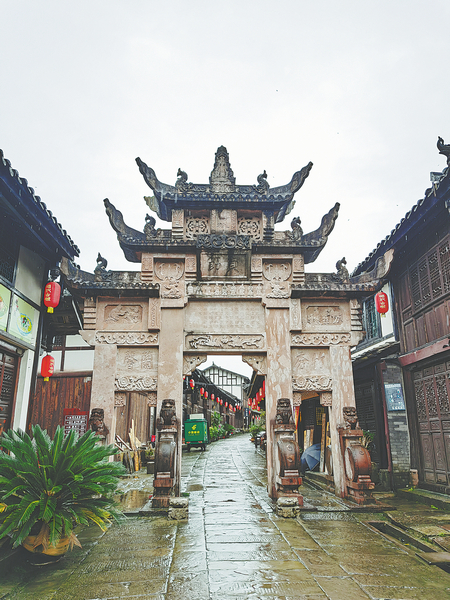A hotbed of history

A chastity memorial arch in Zhaohua Ancient Town. [Photo by Huang Leran for China Daily]
Guangyuan is also known for a plank road built along the Shu Path. Construction of the Shu Path, linking Sichuan and neighboring Shaanxi province, started around 316 BC. It was built on mountains so precipitous that Li Bai (701-762), a great Chinese poet, wrote, "Traveling on the Shu Path is as difficult as ascending to heaven."
When the builders of the path approached the Mingyue Gorge in what is the present-day Chaotian district of Guangyuan, they found it impossible to continue, as the cliffs were too steep. After much thought, they came up with a bold idea.
They chiseled holes at three different heights into the cliffs and inserted wooden beams into them. The upper beams were covered with planks to form a road for pedestrians and the second and third, lower holes, held buttresses.
During the Three Kingdoms period (220-280), Zhuge Liang, prime minister of the Shu Kingdom, used the plank road to transport troops to fight against the Wei Kingdom of North China.
The plank road was burned down and rebuilt many times during various wars. Now, part of it has been restored to allow visitors to admire this man-made wonder.
